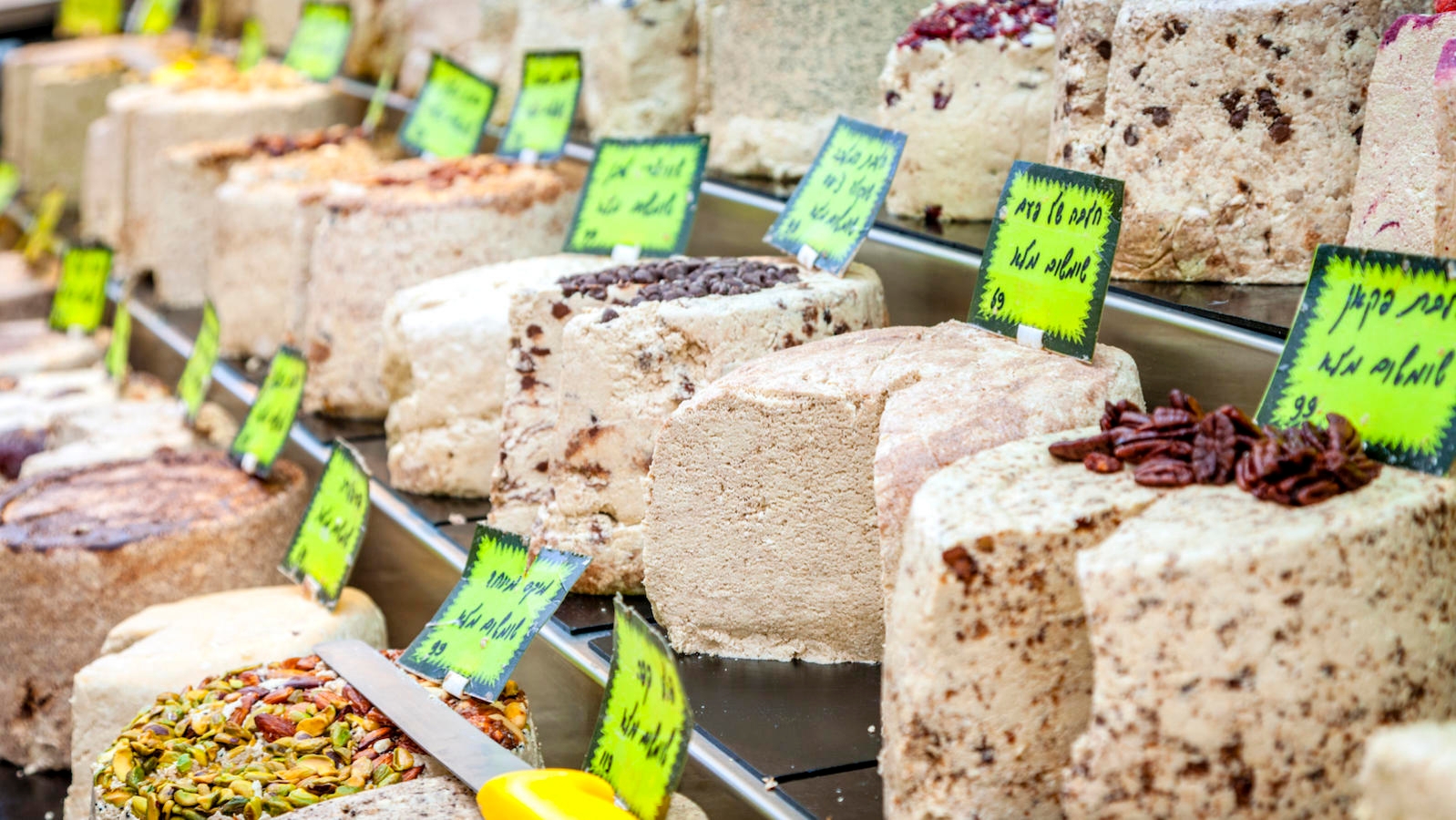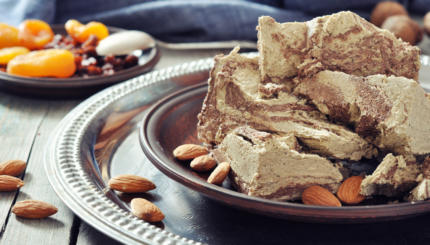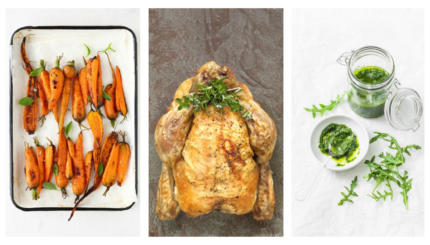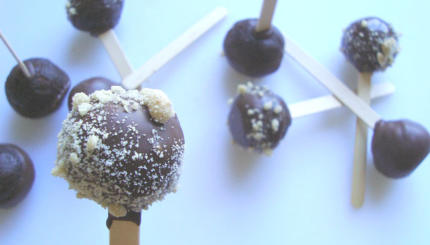Israeli Halvah Recipe
The most ancient of desserts.
While its ancient origins are disputed –some say India, others Turkey, others say it was definitely Byzantine — there is no doubt that halvah is one of the most common desserts in the world. The flaky, dense, tahini-based candy known to American and Israeli Jews is only one of hundreds of different types of halvah eaten across the globe.
READ: The Sweet Story of Israeli Desserts
Halvah (also known as halwa, halva, halava, helva, etc.) is a broad term used to describe desserts made with a base of flour or nut butter, such as sesame tahini, and sometimes including vegetables (such as carrots) or nuts. It is eaten in India, Central and West Asia, North Africa, the Balkans, and of course, in Israel and in Jewish delis throughout the United States. Each culture has its own halvah, united only by name — which derives from the Arabic word for “sweet” — and the fact that each is a sweetened candy or dessert, often an ancient and beloved recipe.
A trip to Israel is not complete without sampling the country’s halvah. Taking a stroll in Jerusalem’s Machane market you can’t miss the halvah merchants, their tables piled high with huge slabs of the treat in a multitude of flavors, filled with different nuts and seeds, colored and flavored with various extracts. And because the dessert is — neither meat nor dairy — it has always been the perfect deli dessert. Many American Jews grew up on Joyva Halvah; Joyva brought the ancient treat to the United States in 1907, and more than a century later, production continues.
READ: Tahini Is the New Trendiest Israeli Food
In addition to the Israeli Tahini Halvah recipe below, you may want to try Indian Carrot-Cardamom Halvah, and Greek Semolina Halvah. Or Halvah Swirl Brownies. The only special tool needed is a candy or instant-read thermometer, for the Israeli halvah. Otherwise, these recipes are very simple to make — any recipe that has survived 3,000 years should be! Each of these recipes can handle many variations. You can substitute different nuts or dried fruit, or add extracts, such as coffee, coconut, and vanilla. They will also keep very well, so they are great for making ahead and keeping on hand for last-minute guests.
It is challenging to achieve the flakiness so famous in Israeli halvah without good experience in candy making. However, even if it comes out smoother and chewier than you are used to, and more like caramel or fudge, this halvah will be incredibly delicious and satisfying.
Ingredients
2 cups honey
1 1/2 cups tahini, well stirred to combine
Up to 2 cups toasted sliced almonds or other nuts (optional)
Directions
Heat honey on medium heat until your candy or instant-read thermometer reads 240˚ F, or indicates the “soft ball” stage of candy making. To confirm that you are at the “soft ball” stage, drop a bit of the honey into a cup of cold water. It should form a sticky and soft ball that flattens when removed from the water.
Have the tahini ready to heat in a separate small pot, and once the honey is at the appropriate temperature, set the honey aside and heat tahini to 120˚ F.
Add the warmed tahini to the honey and mix with a wooden spoon to combine. At first it will look separated but after a few minutes, the mixture will come together smoothly.
Add the nuts, if using. Continue to mix until the mixture starts to stiffen, for a good 6-8 minutes. Pour mixture into a well-greased loaf pan, or into a greased cake pan with a removable bottom.
Let cool to room temperature and wrap tightly with plastic wrap. Leave in the refrigerator for up to 36 hours. This will allow the sugar crystals to form, which will give the halvah its distinctive texture.
Invert to remove from pan and cut into pieces with a sharp knife.
Will keep for months in the refrigerator, tightly wrapped in plastic–if you don’t eat it all first!



